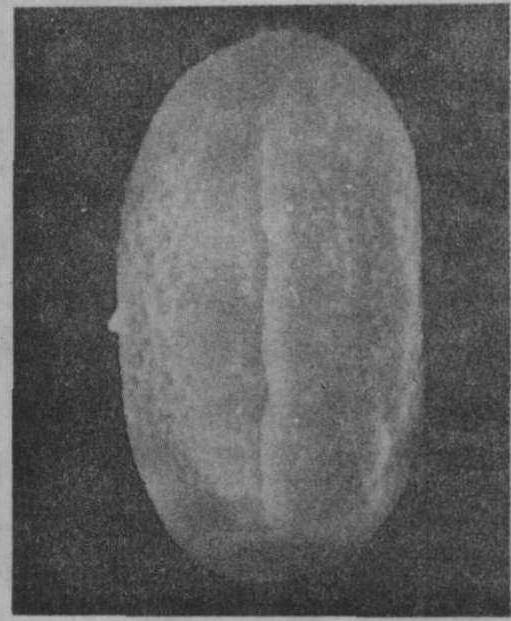紫云英ziyunyingAstragalats sinica
豆科,黄耆属。一年生或二年生草本。根粗壮,茎直立或匍匐,分枝多。奇数羽状复叶,小叶7~13枚,全缘,倒卵形或椭圆形,顶部稍有缺刻,表面有光泽,背部具稀疏的毛。总状花序近似伞形,出于叶腋处。花冠紫色或黄白色。荚果微弯。种子肾形,黄绿色。喜温暖湿润气候。为我国长江流域以南水稻产区的主要绿肥植物及蜜源植物。全株及种子入药,功能清热解毒,利尿消肿,主治肝炎、营养性浮肿、带状疱疹等症。
紫云英milk vetch
春季绿肥和牧草主要蜜源植物。学名Astragalus sinicus L.。别名红花草、草子、翘摇。豆科。一年生或二年生草本,茎直立或匍匐,长50~100厘米,通常有效分枝1~3个。奇数羽状复叶,有小叶7~13片,全缘。伞形花序,腋生或顶生,有小花8~9朵。花冠粉红色或蓝紫色,偶见白色。荚果细长。
紫云英原产中国,明、清时代长江中下游一带已广为种植。现分布于亚洲的温带、亚热带和热带地区。中国大致分布在北纬24°~35°、东经103°~122°的广大区域内,以长江中下游流域种植面积最大。70年代后期全国种植面积曾达933万公顷,占绿肥作物总面积的77%左右。喜温暖湿润气候和肥沃、保肥爽水的砂质土壤,适宜在pH5.5~7.5的土壤种植;不耐碱,土壤含盐量在0.1%以上时不宜栽培,忌渍怕旱。大都播种在晚稻田里,晚稻收割后紫云英在冬闲的稻田里越冬,春季生长迅速,盛花时可作绿肥,为早稻田的前期作物。
花期可达1个月,泌蜜期20天左右。广东肇庆和广西玉林花期为1月下旬至2月中旬。广东花县一带2月上旬至3月中旬。浙江4月中旬至5月上中旬。江西4月上旬至4月下旬。湖南4月上旬至4月下旬。湖北江陵4月上旬至5月初。安徽休宁、歙县一带3月下旬至4月下旬。河南信阳4月中下旬。不同品种的紫云英,花期不一。如湖南早熟种3月底盛花,中熟种4月上旬盛花,晚熟种4月中旬盛花。上海早
熟种4月中旬盛花,晚熟种4月下旬盛花。不同品种开花期长短也不一样,早熟种花期为33天,中熟种为27天,晚熟种为24天。
单株开花自下向上,主茎先于分枝,其开花数占全株开花数1/3左右。单一花序开花次序自外向内,每一花序单花全部开放,约经4~6天。紫云英初花期为粉红色,不泌蜜或泌蜜较少。当颜色变红时,便进入盛花期,泌蜜达到高峰,颜色变为暗红色时表明泌蜜期行将结束。一天中开花泌蜜时间前期为12~15时,以后随气温的升高,开花泌蜜时间逐渐提早。晴天在上午8~10时出现第一次开花泌蜜高峰,10~11时开始减少,12时至16时达到高峰,17时后开花数量减少,泌蜜不多。紫云英开花时要求昼夜平均温度为14~18℃,相对湿度为75~85%,泌蜜时最适宜温度为25℃,晴天光照充足,则泌蜜旺盛。从播种到开花期间若过分干旱,出苗不齐;开花泌蜜期在中国江南地区遇寒潮袭击,出现低温阴雨天,以及种植在山区冷水田里,都会减少泌蜜或不泌蜜。
在中国南部,紫云英种植面积中留种地占10%左右方可用作蜜源,能生产大宗商品蜜。强群日进蜜量可高达12千克。通常每群蜂可采蜜20~30千克,强群可达50千克以上。蜜呈白色或浅琥珀色,结晶乳白而细腻,味甜而不腻,清淡,芳香,属上等蜜,为中国主要出口蜜种。
紫云英蜂蜜的成分如下:水分22.08%,果糖39.79%,葡萄糖35.19%,蔗糖0.76%,麦芽糖0.51%;淀粉酶值13.36,总酸度1.835,pH3.83,羟甲基糠醛0.16(毫克/100克);维生素(毫克/100克):维生素B1 0.039,维生素B2 0.003,维生素C1.5;蛋白质0.50%,氨基酸(毫克/100克):天冬氨酸21.5,苏氨酸5,丝氨酸5,谷氨酸15,甘氨酸5,丙氨酸6.5,胱氨酸0.5,缬氨酸9.5,蛋氨酸3.5,异亮氨酸9,亮氨酸10,酪氨酸1,苯丙氨酸6,赖氨酸8,组氨酸15,精氨酸2,脯氨酸21.5;蜂蜜中含该花种花粉数量为91 507个/克,该花粉占总花粉粒数的87.1%。
紫云英花粉橘红色,花粉粒长球形,赤道面观长椭圆形,极面观为钝三角形或3裂片形。大小为19.4(17.2~21.5)×16.6(15.1~18.2)微米。具3孔沟,沟细长,内孔不显著,与沟相交处沟缢缩。外层稍厚于内层,外壁表面具清楚的细网状雕纹,网孔圆形至椭圆形,大小为0.4~0.6微米,网脊宽约0.2微米,由细颗粒组成(见图)。紫云英花粉含有丰富的氨基酸和维生素。人体必需氨基酸含量较高,约占10%。花粉的黄酮类物质含量较高(约1525.25毫克/100克)。从紫云英花粉中测出6种常量元素和23种微量元素。其中锰、铬、镍、铜、硼等5种微量元素含量较高,是一种优质商品花粉。从紫云英花粉测出6种维生素,其含量(毫克/100克)如下:维生素K30.6,尼克酸4.7,维生素A原0.39,维生素E 25,维生素B1 14.8,维生索D2 1.54。紫云英花粉还原糖量为20.03%,含果糖8.03%,蔗糖1.06%。

(a)

(b)
紫云英花粉粒
(a)赤道面观(×3500);(b)极面观(×4500)
紫云英花粉氨基酸含量(毫克/100克):天冬氨酸2.942,苏氨酸1.146,丝氨酸1.196,谷氨酸2.904,脯氨酸4.929, 甘氨酸1.254,丙氨酸1.444,半胱氨酸0.195,缬氨酸1.524,甲硫氨酸0.648,异亮氨酸1.338,亮氨酸2.171,酪氨酸0.956,苯丙氨酸1.294,组氨酸0.620,赖氨酸1.379,精氨酸1.398,总计为27.338。
紫云英花粉微量元素含量(毫克/100克):铁180,铝150,钙370,镁370,钡1. 1,铍<0. 004,锰7. 3,锆0. 37, 钛1. 10, 铅0.110, 锡0.037,镓<0.037,铬1.100, 镍1.300, 钼0.055, 钒,0.037,铜1. 30, 镱<0.037, 钇<0.037,锌3.70,钴<0.037,锶<0. 37,铋-,银<0.0037,硼3.70,钠≥40,钾>370,磷370,硅>370,硒0.0013。
紫云英自然授粉率一般只有4~7%,经过蜜蜂授粉能提高到80%以上,豆荚早熟5~7天。紫云英留种田放蜂可增加种子收获量56%左右。
紫云英milk vetch
学名:Astragalus sinicusL.。又名红花草、花草、荷花草、莲花草、翘摇。属豆科黄芪属越年生草本植物。是中国稻田最主要的冬季绿肥作物之一。

紫云英
紫云英原产中国长江中下游地区。《尔雅》中记载的“柱夫”、“摇车”以及《齐民要术》一书中记载的翘尧均为今日的紫云英。唐宋以后始在太湖水稻地区作为绿肥栽培,明清时代扩大到长江中、下游各省。70年代,紫云英已北移至黄河边。西至关中渭河流域。种植总面积达933万公顷。20世纪50年代,日本、美国和南朝鲜等一些东南亚国家也开始种植。
成分 紫云英植株中氮(N)、磷(P)、钾(K)的含量因生育期、组织器官、土壤及施肥的不同而异。一般花蕾期和初花期养分含量高于盛花期和结荚期(见表)。随着生育期的变化,鲜草产量增加,氮、磷、钾养分总量亦相应增加。紫云英各组织器官的养分平均含量(以干物质计)约为N 2.18%~5.50%,P2O5 0.56%~1.42%,K2O 2.83%~4.30%,CaO 0.60%~1.86%,MgO 0.40%~0.93%。其中以叶和花中的氮、磷含量较高,茎秆中钾的含量较高。紫云英含有较多的蛋白质、脂肪、胡萝卜素及维生素C等营养,且纤维素、半纤维素、木质素较低,是一种优良牧草。
紫云英不同生育期养分含量(%)
| 生育期 | 鲜 草 | 干 草 | 鲜草产量 (kg/hm2) | ||||
| N | P2O5 | K2O | N | P2O5 | K2O | ||
| 花蕾期 初花期 盛花期 结荚期 | 0.41 0.41 0.31 0.30 | 0.16 0.12 0.16 0.14 | 0.37 0.36 0.30 0.32 | 3.70 3.69 2.81 2.71 | 1.35 1.11 1.44 1.28 | 3.35 3.24 2.71 2.88 | 16 140 18 810 32 115 265 80 |
栽培技术 紫云英性喜温暖湿润的气候,其生长的适宜温度为15~25℃。当日平均温度低于5℃和高于30℃时发芽困难,生长缓慢,气温>26℃,结荚差,千粒重低;土壤含水量为24%~28%,植株生长良好。土壤含水量低于10%,大气相对湿度<70%时,生长凋萎;苗期渍水易烂根;光照少于3000勒克斯,幼苗生长瘦弱。紫云英对土壤条件要求不严,但耐盐性差,以轻松肥沃和通透性好的土壤生长最好。其适宜的土壤pH值为5.5~7.5。
紫云英的栽培要点是:❶种子处理。播前须晒种、擦种和用比重1.09的盐水选种,或用钼酸铵、硼酸、磷酸二氢钾溶液浸种或拌种,以提高发芽率;
❷接种根瘤菌。有菌剂法和苗圃法两种。前者是用根瘤菌剂拌种,后者采用事先已培育好的紫云英壮根瘤捣烂拌种;
❸适时播种。适播期从北到南逐渐推迟,为8月中旬到10月上旬。具体时间视当地气温、土质、茬口等而定。如中国江苏南部与单季稻或双季稻套种的多在9月下旬播种,与中稻或棉田套种的在9月上旬播种。播种量北方为60~75千克/公顷,南方30~45千克/公顷。留种田为15~30千克/公顷。稻田套种常用撒播。棉田等旱作间套种可条播或穴播;
❹田间管理。性喜湿怕渍,须及时开好排水沟。合理施肥是提高鲜草和种子产量的重要措施;
❺收种。紫云英种子细小,果荚易裂,通常全田有80%果荚变黑时即可收种;
❻防治病虫害。主要病害有斑点病、菌核病、白粉病、叶斑病。主要虫害有蚜虫、蓟马、潜叶蝇等。除用3000倍液或5000倍液乐果治虫外,可用1∶1硫磺石粉防病。
利用方式 紫云英可用作肥料、饲料及蜜源植物。紫云英作肥料的利用方式可直接耕翻或制作沤肥或畜、禽食用后利用畜禽粪肥田等。❶直接耕翻。紫云英直接耕翻作水稻基肥最为普遍,也可作棉田。新建茶园,幼龄果树苗的基肥。为了充分发挥绿肥肥效,必须掌握适宜的耕翻期,耕翻深度和施用量。紫云英盛花期鲜草产量、养分总含量最高,是耕翻利用最适时期。一般施用量为15~30吨/公顷。耕翻深度应以微生物在土壤中旺盛活动范围为准,以10~15厘米为宜。具体耕翻深度视气候条件、土壤性质、绿肥种类及植株老嫩程度而定。当组织幼嫩时,在土壤砂性强、土温较高的条件下,耕翻宜深些;组织粗老,纤维素含量高和土壤粘重、低温高湿条件下则耕翻宜浅些;紫云英水溶性物质和苯醇溶性物质较高,木质素、纤维素、半纤维素含量较低。C/N比小,施入土壤后易分解。据测定,紫云英埋后第一个月分解速度最快,22天中矿化量达总矿化量的80%左右。一个月内铵态氮累积量达最高,残留碳量较少。这表明,紫云英前期养分释放快,供肥强度大,后期肥劲不足。可在后期适量追施速效性肥料。
❷作沤肥。在南方水网地区,一般于4月中下旬(盛花期)刈割,将紫云英与河泥、猪粪、稻草制作沤肥。作中晚稻基肥或面肥。
❸作饲料。紫云英可青饲或青贮后和晒制成干粉后作畜禽饲料。据中国前华东地区农业科学研究所测定,用紫云英喂猪,从猪粪中回收的氮、磷、钾分别为绿肥原有量的75.6%,86.2%和77.8%。在等量鲜草条件下,用紫云英制作成干粉喂猪(供3头猪喂2个星期)后所收回的粪肥肥田,水稻增产量虽稍低于直接翻压者,相差仅102千克/公顷,而前者可得肉产品达26千克。
此外,紫云英是中国南方地区主要蜜源植物,泌蜜量大,蜜质优良。在留种田花期放养蜜蜂,既可使其授粉及时,提高结实率和产种量,又可收获优质蜂蜜。
紫云英milk vetch
Astragalus sinicus L.,又称红花草、草子、翘摇、红花菜、荷花郎等。豆科,黄芪属。越年生草本。绿肥与饲料作物。株高0.6~1 m。主根肥大,支根发达。茎直立或匍匐状,分枝多。单数羽状复叶。花淡红到紫红,簇生顶端成孢状。荚果细长,每荚种子4~5粒。种皮光滑。喜温暖、湿润气候,并能耐低温(-17~-19℃),在中国已北移至关中地区栽培。但耐旱、耐盐能力不及苕子。新区种植接种根瘤菌是成败关键。宜于稻田套种或单种、混播,根据各地气候条件,保证冬前有3~4个分枝的壮苗越冬,开春早发、生长快,每公顷可产鲜草22.5~37.5 t,高者75 t以上。鲜草含N 0.4%、P2O5 0.11 %、K2O0.35%,茎叶柔嫩,掩青时易耕翻、腐解。干草含粗蛋白22.0%,亦可饲用。

紫云英
1.枝茎梢部 2.花 3.荚果 4.根系
紫云英
越年生豆科草本植物,稻田种植的主要冬季绿肥品种,优质的绿肥饲草。又称红花草、江西苕、小苕。在川西平原种植历史悠久,其他市、地均有种植。有130多个品种,分早熟种、中熟种、晚熟种,主要品种有莲选2号、新会、川西、醴陵、余江大叶子等品种。全生育期190天~210天左右。四川一般10月上、中旬播种,翌年3月中旬收青,5月上旬左右收种。70年代中期,全省种植面积达400多万亩,现种植面积60余万亩,鲜草亩产1500千克~2500千克,种子亩产3千克~50千克。